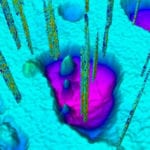 Technology
Technology  Technology
Technology  Humans
Humans 10 Everyday Human Behaviors That Are Actually Survival Instincts
 Animals
Animals 10 Animals That Humiliated and Harmed Historical Leaders
 History
History 10 Most Influential Protests in Modern History
 Creepy
Creepy 10 More Representations of Death from Myth, Legend, and Folktale
 Technology
Technology 10 Scientific Breakthroughs of 2025 That’ll Change Everything
 Our World
Our World 10 Ways Icelandic Culture Makes Other Countries Look Boring
 Misconceptions
Misconceptions 10 Common Misconceptions About the Victorian Era
 Mysteries
Mysteries 10 Strange Unexplained Mysteries of 2025
 Miscellaneous
Miscellaneous 10 of History’s Most Bell-Ringing Finishing Moves
 Technology
Technology Top 10 Everyday Tech Buzzwords That Hide a Darker Past
 Humans
Humans 10 Everyday Human Behaviors That Are Actually Survival Instincts
 Animals
Animals 10 Animals That Humiliated and Harmed Historical Leaders
Who's Behind Listverse?

Jamie Frater
Head Editor
Jamie founded Listverse due to an insatiable desire to share fascinating, obscure, and bizarre facts. He has been a guest speaker on numerous national radio and television stations and is a five time published author.
More About Us History
History 10 Most Influential Protests in Modern History
 Creepy
Creepy 10 More Representations of Death from Myth, Legend, and Folktale
 Technology
Technology 10 Scientific Breakthroughs of 2025 That’ll Change Everything
 Our World
Our World 10 Ways Icelandic Culture Makes Other Countries Look Boring
 Misconceptions
Misconceptions 10 Common Misconceptions About the Victorian Era
 Mysteries
Mysteries 10 Strange Unexplained Mysteries of 2025
 Miscellaneous
Miscellaneous 10 of History’s Most Bell-Ringing Finishing Moves
Top 10 Rare And Quirky Finds From The Medical World
Every human is a universe of nerves, cells, and biological processes. Woven into this wonderland is a lot of weirdness. Sadly, because of disease and stark statistics, too many people view the body with fear.
Scary stuff aside, the world within each person is so quirky that it deserves a second look. Among a myriad of delights nestle the gems—the rare abilities, mysteries, and facts. Just recently, scientists watched evolution in living humans, found the personal bubble is a thing, and determined that cancer’s worst enemy was already in place.
10 Fainting Mystery Solved

Whenever humans stand up, there is a sudden drop in blood pressure. The shift is so severe that people should faint every time they decide to leave a chair. Something prevents humanity from keeling over, but researchers could never understand what.
In 2018, this lifesaving mechanism appeared in the shape of baroreceptors. Neither the neurons nor their link to the fainting mystery is new to science. However, the details stumped experts for close to a century.
The Scripps Research Institute became the first to identify the missing piece, which turned out to be a pair of proteins. Called PIEZO1 and PIEZO2, they sense blood pressure. When the latter becomes too low, the proteins trigger the baroreceptor reflex. As a result, the heart starts to beat faster and more blood rushes to the brain, compensating for the loss of pressure.[1]
The revealing tests were done on mice and not people. That aside, the study proved PIEZO1 and PIEZO2’s role in this strange tale. The results also matched the case details of human patients suffering from a faulty baroreceptor reflex.
9 People Recognize 5,000 Faces

In the past, the topic of facial recognition in humans sparked many studies. Oddly, none tried to determine how many faces an individual can recognize. In 2018, researchers decided they wanted a number.
To achieve this, they drafted students, aged 18 to 61, from two universities. The goal of the study was to pinpoint how many faces somebody could point at and say, “Hey, I know that guy.” This was different from facial recall on a memory basis. If the student personally recognized an individual from his life, the face qualified. This did not involve random faces of strangers provided during a memory test.
First, the participants had to list everybody they could recall even if it was the janitor they never spoke to. After an hour, they were asked to stop. Using some fancy mathematics, the researchers calculated how many faces the students would have remembered had they continued past their given hour.[2]
Second, they were asked to identify all the celebrities they knew from a lineup packed with 3,441 photographs. Incredibly, after the results of both phases were combined, it revealed that the average human can remember 5,000 people.
8 Tears Of Blood

Recently, an Italian man had the fright of his life. Blood poured from his eyes for seemingly no good reason. Looking like something that crawled out of a demonic possession movie, he burst into the emergency room of the local hospital.
The 52-year-old explained that the bloody tears had begun two hours earlier and that the weeping was beyond his control. He was not crying; the stuff just poured from his eyes. There had been no warning and no pain.
The condition, hemolacria, is so rare that the doctors had no idea what they were dealing with. An examination discovered neither trauma nor visual problems.
Eventually, the doctors found something. The patient had a slight case of conjunctival hyperemia, an inflammation of the membrane that covers the eyes. This condition comes with an excess of blood. Together with benign tumors under both eyelids, this caused the hemolacria.[3]
Past cases were also caused by infection and eye tissue trauma. The Italian patient was given some eye drops, had the tumors removed, and has been free of bloody tears ever since.
7 Pleistocene Deformities
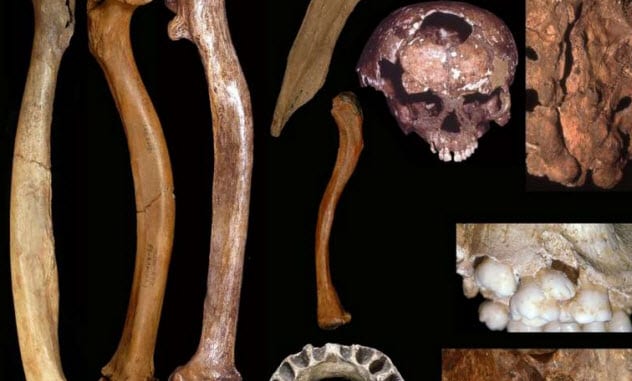
In 2018, anthropologist Erik Trinkaus found something odd. Based at Washington University, he examined 66 fossils belonging to humans from the Pleistocene (2.6 million to 11,700 years ago). The samples, gathered from the Middle East and Eurasia, averaged around 200,000 years old. The bones belonged to young adults and a variety of Homo species.
They had a sad thing in common. The fossils collectively showed 75 developmental abnormalities. This was a disturbingly high percentage. Trinkaus discovered bowed arms and legs as well as deformed jaws and skulls. Most had no obvious cause, but some were due to blood disorders, hydrocephaly, and possibly inbreeding. The latter was likely because hunter-gatherers lived in small pockets with an increased chance of reproducing with relatives.
Trinkaus suggested that humans experienced above-average deformities during the Pleistocene because similar issues make up less than 1 percent of today’s anomalies. He also admitted to an alternative theory. Individuals with deformities could have been buried differently, making their remains more likely to be found than the rest.[4]
6 Nerve Recalls Location Of Food
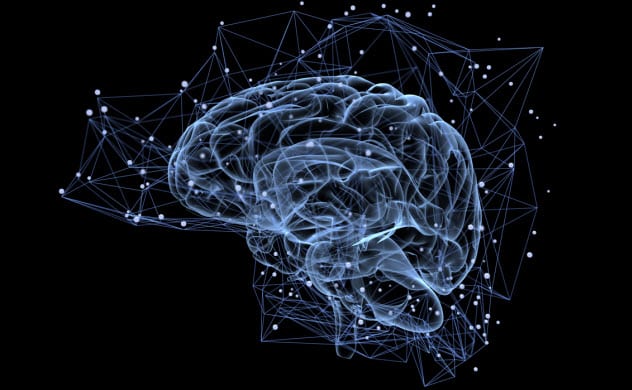
The gut is not just a loopy thing that moves food along for processing. In humans, it has a strong connection with the brain. In fact, that connection—the vagus nerve—is the longest nerve in the body. By sending signals through the vagus, the gut controls how much a person eats and when they feel full.
In 2018, experiments with rodents revealed another ability. As unbelievable as it seems, the gut appears to help memories form in the brain—in particular, the location of a good meal.
Researchers noticed that the communication only activated when rats ate something, hinting that the nerve might exist to help the rodents remember where they found good food. To see what would happen, parts of the animals’ vagus nerves were severed.[5]
Nerve-impaired rats had trouble remembering locations, even when they had previously known exactly where to go to escape or feed. This was not full-blown memory loss. The rats continued to function normally and made memories about other things. They just couldn’t pinpoint their own locations in known environments or navigate.
Researchers believe the findings could be translated to humans.
5 U.D.’s Unusual Left Brain

A remarkable medical case involved a little boy called U.D. As a last resort to treat the seven-year-old’s unmanageable seizures, doctors made the drastic decision to remove a large part of his brain. A third of his right hemisphere was cut out, including the centers responsible for vision and sound.
Today, the 11-year-old is seizure-free. He also shows normal developmental progress and above-average reading skills. Both his eyes work, but the left one’s information doesn’t register in the brain. (The left eye’s sight is processed in the right hemisphere, which is missing in the boy’s case.)
Each hemisphere also handles different aspects of vision. But when researchers scanned his brain, they were amazed to find that U.D.’s gray matter was far from hamstrung. MRI scans showed that the right hemisphere’s facial recognition showed up in the left, next to the remaining hemisphere’s job of detecting words.[6]
It did the double duty so well that the child appeared to be unaware that his left eye was missing any information. Researchers cannot explain how a brain region can adopt additional tasks without sacrificing its original purpose.
4 Living Auras
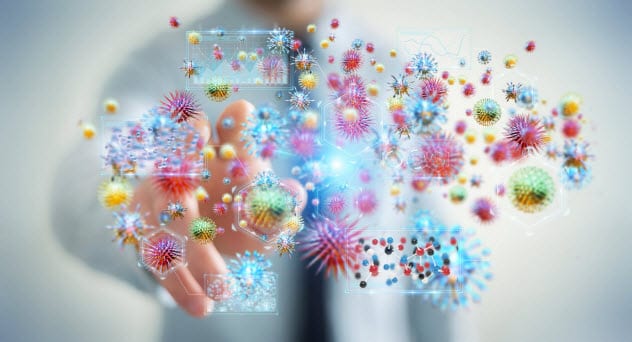
This may sound a little weird, but scientists decided to search for life inside the personal bubble—the one that surrounds every human being. In technical terms, this “aura” is called an exposome.
To test for traces of, well, anything, 15 volunteers strapped air-monitoring devices to their arms. Some carried them for a week, while others endured them for a month. One particularly dedicated researcher lived with his box for two years.
When the devices were removed, the particles inside revealed that the personal bubble was not an imaginary space. Far from empty, it teemed with tiny guests such as microscopic animals, fungi, microbes, and chemicals. The exposome’s ecosystem appears to be unique to each person, but it is affected by what he or she is currently exposed to.
Things like pets, locations, and even the seasons all left their mark. When the microbial and fungal bits were DNA tested, a mind-blowing 2,500 species were found drifting inside the volunteers’ bubbles. Unfortunately, the bad guys were also there—disease-bearing microbes and carcinogens like diethylene glycol.[7]
3 Unique Sounds Of Beatboxing
Musicians called beatboxers have a special skill—creating convincing percussion sounds by using just their vocal tracts and mouth. In 2018, researchers wanted to understand the biology behind these living human instruments. Thus, they gathered a group of beatboxers. To add some variety, the subjects included both genders, different ages, and a range from novice to expert.
One by one, they were slotted into an MRI machine and asked to do their thing. As the musicians clicked and rattled away, scanners snapped the movements of their jaws, lips, tongues, larynxes, and nasal passages.
For the first time, scientists could see the mechanics of the art, and what they learned was surprising. The mouth, nose, and throat parts that activated were those used for speech. However, the beatboxers used them in ways that had nothing to do with talking.
In effect, it was a whole new language filled with unique sounds. This crushed previous research that said beatboxers could not make sounds outside of the world’s known languages and phonetics.[8]
2 Special Spleens
For over 1,000 years, the Bajau people have lived on boats around Indonesia. They spend the majority of their time hunting underwater for food and coral. Scientists wondered if generations of oxygen deprivation had tweaked their genes.
This was not so far-fetched. High-altitude populations in Tibet, South America, and Ethiopia have genetically adapted to live with low oxygen levels. Even so, the researchers were skeptical about finding anything. A thousand years was short for evolution, and these people did not live at high altitudes.
The 2018 study quickly converted the weary when they measured 59 spleens from Bajau and 34 from a nearby village. The divers’ spleens were 50 percent bigger. When anyone dives, the spleen contracts to provide the body with oxygen-rich red blood cells.
DNA tests confirmed that the Bajau had 25 different genes and one of them, PDE10A, affects spleen size in mice. Despite misgivings from the scientific world, the study presents strong evidence of natural selection in living humans. In the case of the Bajau, it helps them to better “breathe” underwater by storing more oxygenated red blood cells inside their hefty spleens.[9]
1 Cancer’s Kill Code
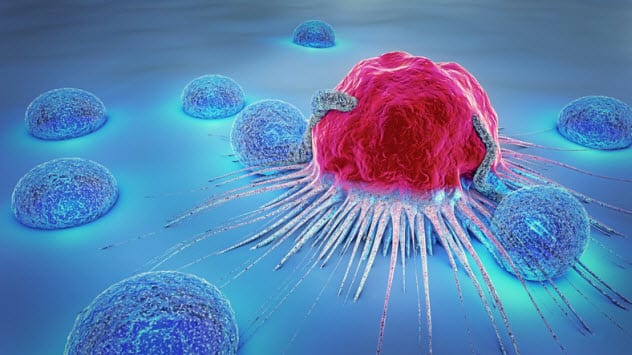
There has been a massive breakthrough on the cancer-fighting front. Researchers have discovered a “kill code” that could wipe out cancer. Ironically, the possible cure is already right where it should be—inside every cell of the human body.
In 2017, researchers noticed how certain ribonucleic acids (RNAs) caused cancer cells to perish. In addition, malignant cells failed to become resistant to the RNA. How the molecules made the cancer cells self-destruct was a mystery. Since the resistance was also a first in cancer research, it was important to find the answer.
In 2018, that answer came. RNA contains a toxic genetic code. The moment a cell mutates and turns cancerous, the code made the cells destroy a certain gene (one that encourages cancer cell growth). The hacked-up gene then kills the very cell that ripped it up.
Amazingly, the mechanism is not accidental. It evolved around 800 million years ago, most likely to fight cancer. Researchers now want to make a more powerful version of the toxic molecules and introduce them directly into cells.[10]
For more quirky medical stories, check out 10 Recent Crazy Medical Stories That Will Blow Your Mind and 10 Really Weird Chinese Medical Treatments And Their Effects.




